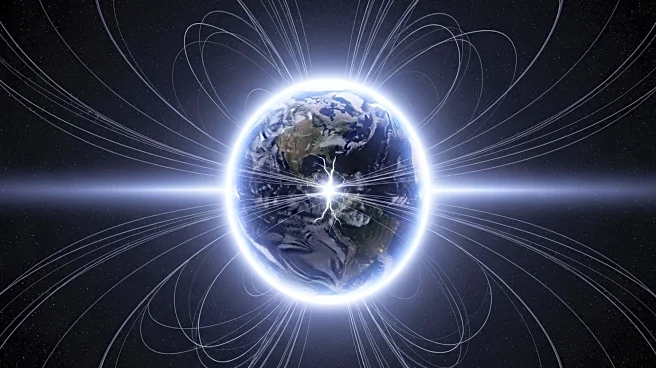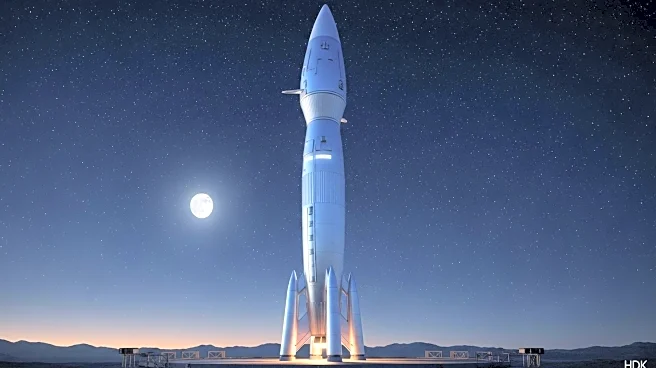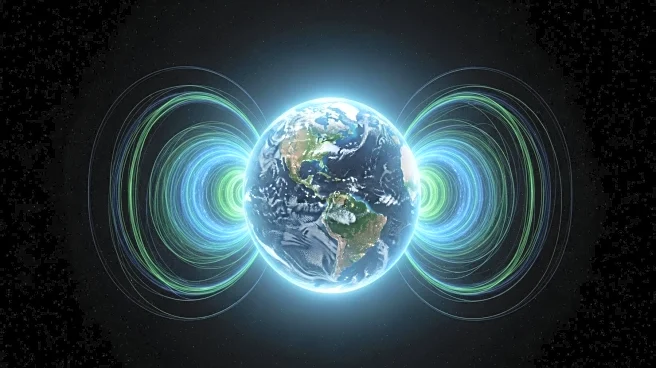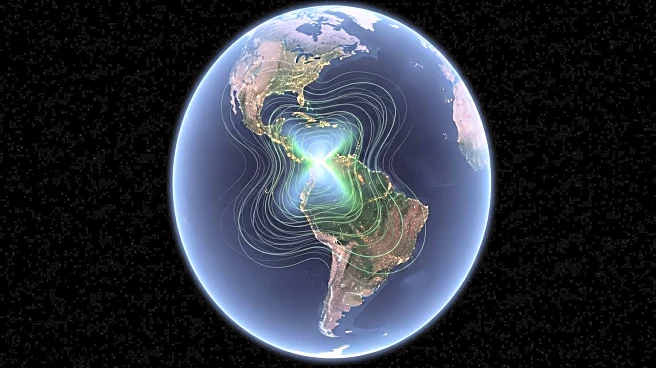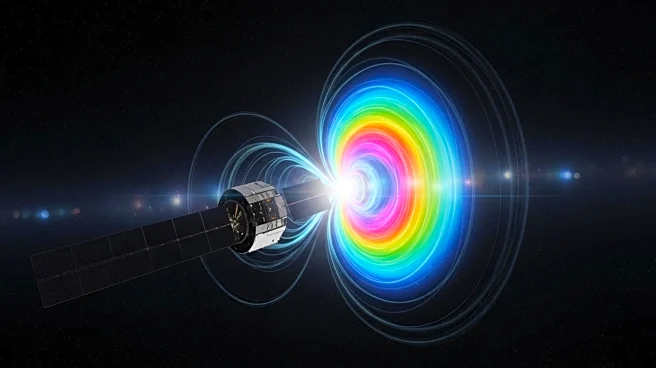What's Happening?
The European Space Agency's Swarm satellite constellation has been monitoring the South Atlantic Anomaly, a weak region in Earth's magnetic field, since 2014. Recent data reveals that the anomaly has expanded eastward and is weakening more rapidly since 2020.
This region, which has grown by an area roughly half the size of continental Europe, poses a threat to satellites and the International Space Station due to increased exposure to solar radiation. The anomaly's expansion is attributed to unusual patterns in the Earth's core, where the magnetic field behaves unexpectedly. The study highlights the importance of understanding Earth's magnetic field dynamics, which are crucial for satellite operations.
Why It's Important?
The expansion of the South Atlantic Anomaly is significant because it affects satellite operations and communication systems. As Earth's magnetic field weakens in this region, satellites are more vulnerable to solar radiation, which can cause damage or communication blackouts. This poses risks to industries reliant on satellite technology, including telecommunications, navigation, and weather forecasting. The anomaly's growth could lead to increased costs for satellite maintenance and protection measures. Understanding these changes is vital for developing strategies to mitigate potential disruptions in satellite services, which are integral to modern infrastructure.
What's Next?
Scientists will continue to monitor the South Atlantic Anomaly using the Swarm satellite constellation to better understand its dynamics and potential impacts. Further research may focus on developing technologies to protect satellites from increased radiation exposure. Stakeholders in the satellite industry may need to invest in adaptive measures to ensure the resilience of satellite operations. Additionally, the shifting magnetic north pole, moving towards Siberia, could necessitate updates to navigation systems that rely on magnetic orientation.
Beyond the Headlines
The study of the South Atlantic Anomaly offers insights into the complex nature of Earth's magnetic field, which is not a simple dipole but a dynamic structure influenced by the planet's core. This research underscores the importance of satellite technology in mapping and understanding these changes. The anomaly's behavior could also have implications for geological studies, as it reflects deep-seated processes within the Earth. Long-term monitoring may reveal more about the interplay between Earth's core and its magnetic field, contributing to broader scientific knowledge.


